TV for TV, 1983
CATV video installation (2 TVs)
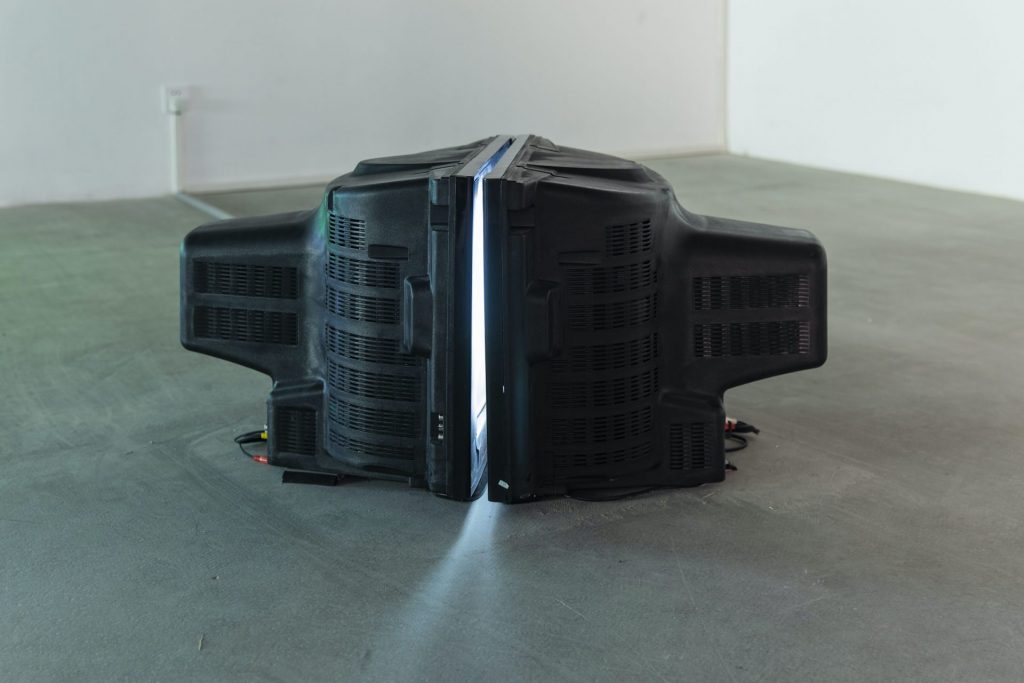
Takahiko Iimura, TV for TV, 1983. Installation view, OCAT Shanghai, 2020.
Image courtesy of OCAT Shanghai.
Iimura’s monitor installation TV for TV (1983), originally presented in Osaka and later exhibited in the 1994 Guggenheim Museum survey show Japanese Art After 1945: Scream Against the Sky consists of two identical and untuned TV monitors facing each other with their broadcasts, playing infinitely for an audience solely of each other. The art work, originally designed to broadcast a different local television station on each monitor, animates the sculptural monitors as close relational communicators, albeit in a one-way stream of broadcast content. Because the monitors are tightly pushed up ‘facing’ against each other the video sculpture implies an embodied elemental animism, an electronic intimacy, and implied abstract communication.
This Is A Camera Which Shoots This, 1980
CATV video installation (2 cameras, 2 TVS)
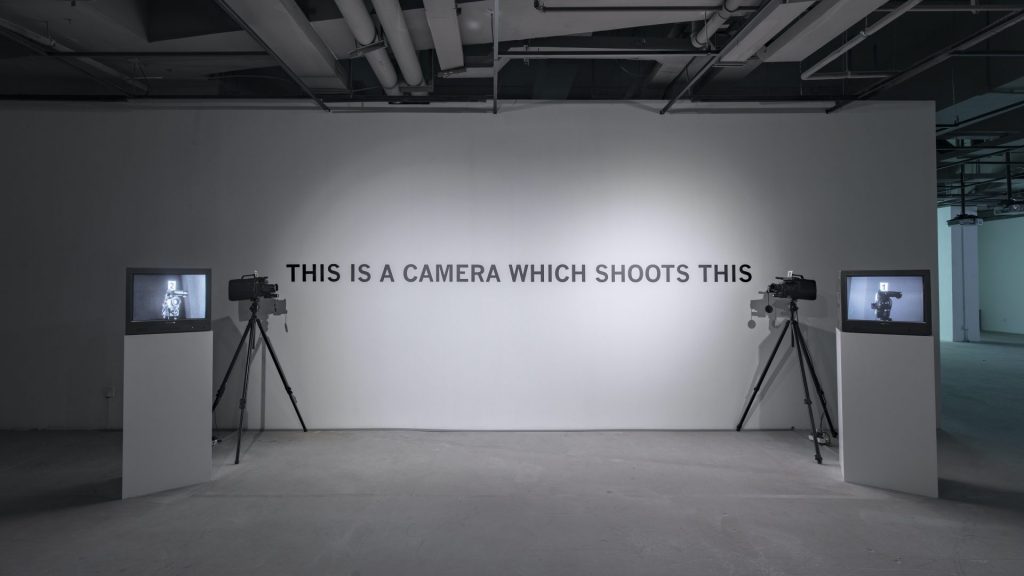
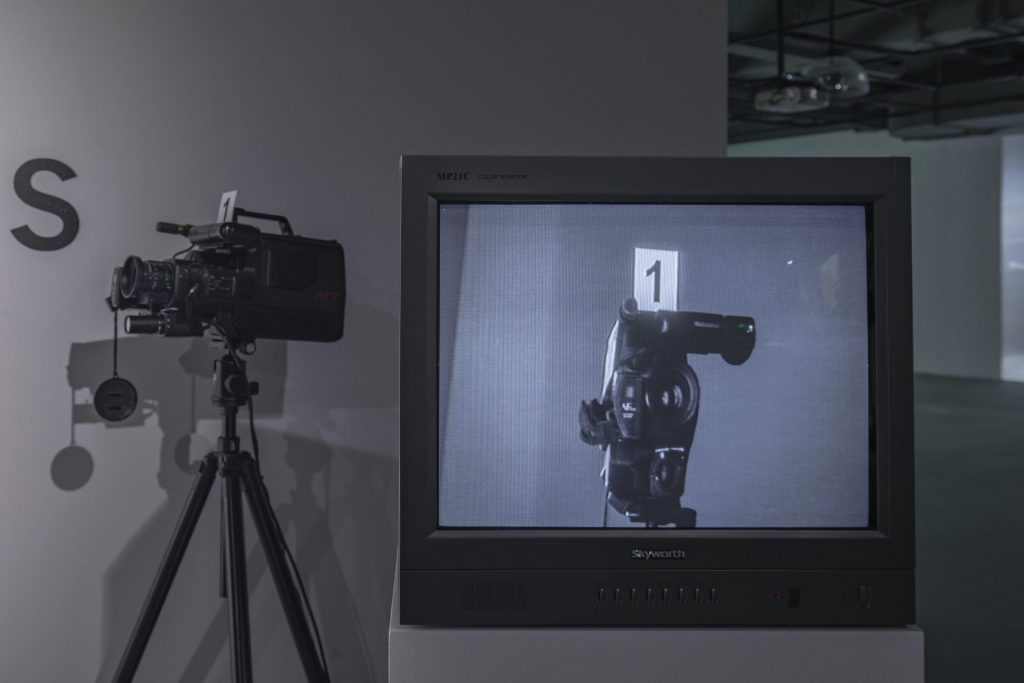
Takahiko Iimura, This Is A Camera Which Shoots This, 1980. Installation view (detail), OCAT Shanghai, 2020.
Image courtesy of OCAT Shanghai.
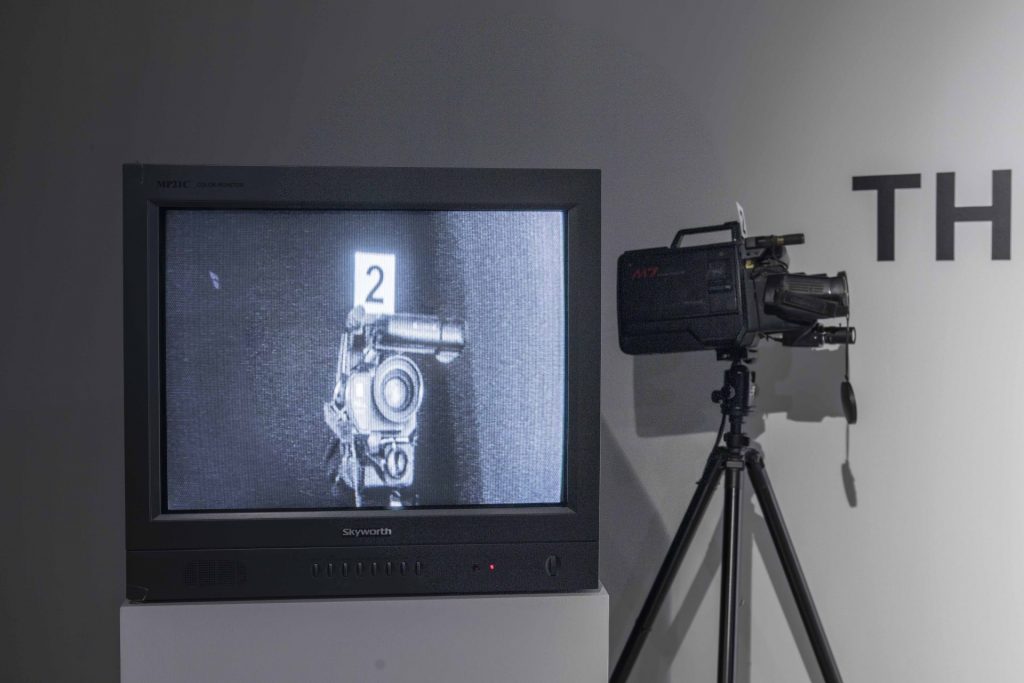
Takahiko Iimura, This Is A Camera Which Shoots This, 1980. Installation view (detail), OCAT Shanghai, 2020.
Image courtesy of OCAT Shanghai.
Iimura’s iconic This is A Camera Which Shoots This (1980) is a video installation consisting of two video cameras and two monitors arranged in pairs opposite each other with the title sentence centered on the wall between them. In this work first exhibited in 1980 at Tokyo’s American Center, Iimura creates a vicious logic cycle by redirecting the signals of the cameras so that each appears to be recording itself, emphasizing the instant playback possibilities of video that allow one to be simultaneously recording, recorded, and to watch the recording as it happens. Additionally, This is A Camera Which Shoots This continues and expands upon explorations of the semiotic differences between Japanese and Western cultures through the medium of video that Iimura began in the 1970s.
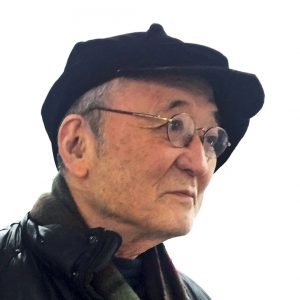
Image courtesy of Microscope Gallery ©2018 Microscope Gallery
- Takahiko Iimura
1937, Tokyo, Japan
Born in Tokyo, Japan in 1937, Takahiko Iimura is a pioneering artist known for his work with film, video, installation, performance, and digital technologies spanning more than 50 years. Iimura first began working with film in 1960 and was instrumental in the burgeoning Japanese experimental and independent film scene. Iimura moved to the US on a Fellowship from Harvard University in 1966 and soon immersed himself in the mid-60s New York experimental film and art community. Early videos were included in exhibitions at the Museum of Modern Art of New York and PS1 (1975), and Centre Georges Pompidou in Paris, France (1977), while other performance based works and interactive installations were featured in the 1979 two-person exhibition New Video (with Shigeko Kubota) at the Whitney Museum of American Art, New York.

